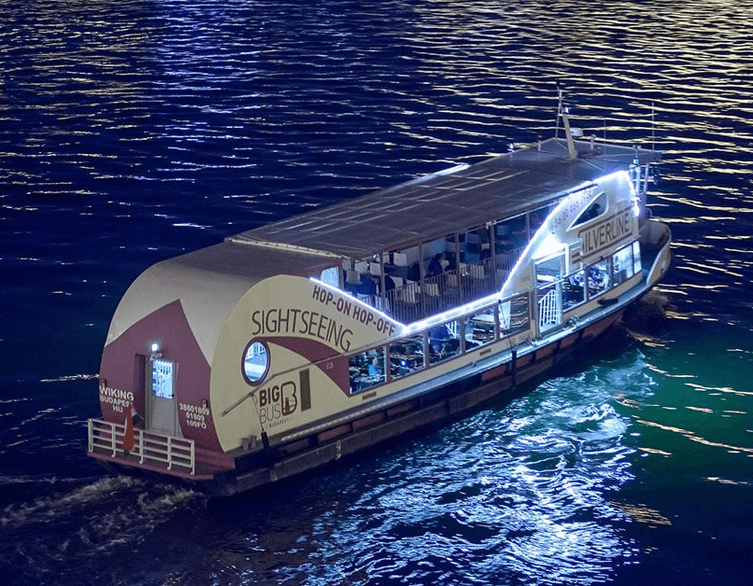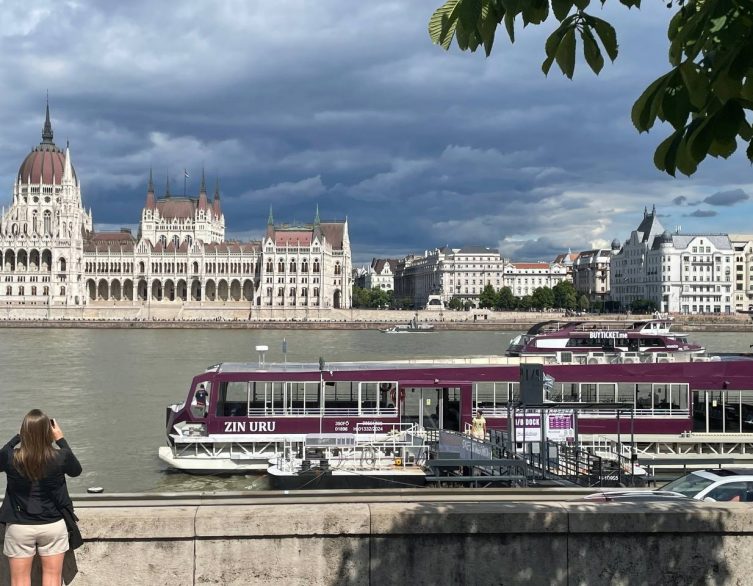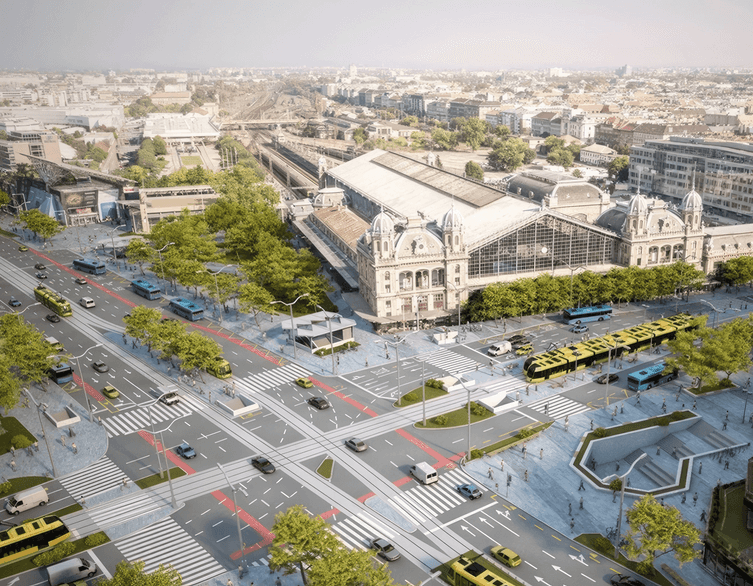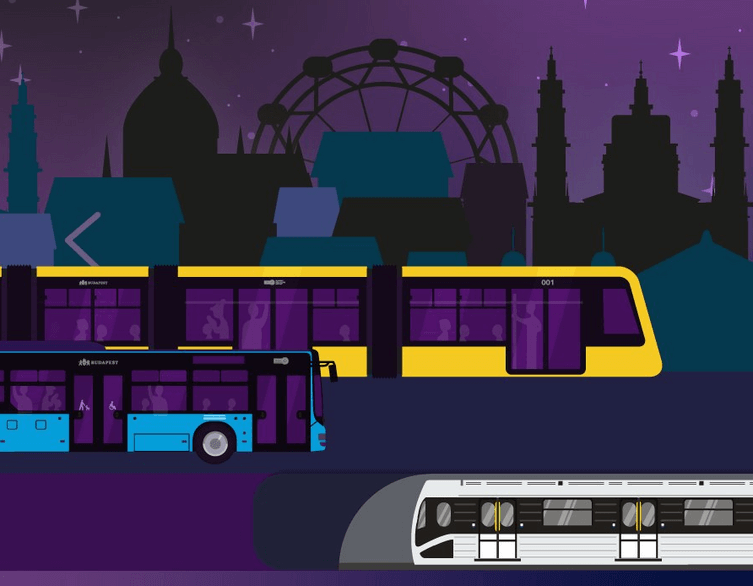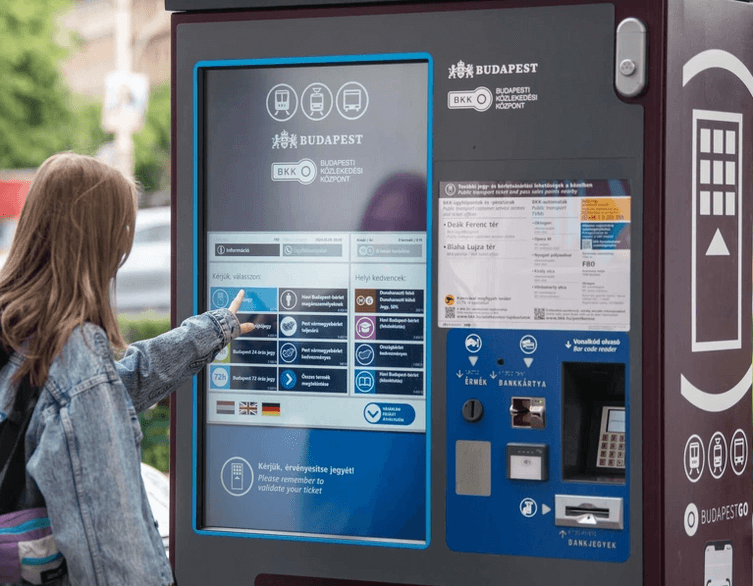Budapest Gets Ready to Revive Its Historic Tram Connection: The Újbuda-Újpest Tram Axis Project

Budapest is embarking on one of its most ambitious public transport projects in decades, bringing trams back to the heart of the city where they haven’t run for years. The Hungarian capital has officially launched the planning phase for the second stage of the Pest tram connection project, which promises to revolutionize how visitors and locals travel through the city center.
A Historic Return to Bajcsy-Zsilinszky Street
After decades of absence, trams will soon roll again along Bajcsy-Zsilinszky Street and the southern section of Váci Road, areas that once bustled with electric streetcars until the construction of the M3 metro line made city planners believe they were no longer necessary. This decision, made in the 1970s to prioritize metro connections, inadvertently created gaps in Budapest’s public transport network that are only now being addressed.
The new development will create an impressive 2.2-kilometer tram line connecting Deák Ferenc Square with Lehel Square, establishing a direct link between North Pest and South Buda without requiring passengers to transfer between different transport modes. This represents a significant shift in Budapest’s transport philosophy, moving away from the car-centric planning of previous decades toward sustainable, accessible public transport solutions.
Best deals of Budapest
Creating Budapest’s Most Important Tram Corridor
The project aims to establish what could become Budapest’s most crucial tram axis, stretching across the entire city and connecting previously isolated networks. Currently, the 14 tram line serves North Pest up to Lehel Square, while the 47 and 49 tram lines connect South Buda only as far as Deák Ferenc Square. The new connection will eliminate the need for transfers and significantly reduce travel times across the capital.
This seamless connectivity will particularly benefit the thousands of residents living along the Fehérvári Road, Bartók Béla Road, and in the Lehel Street and Váci Road neighborhoods. With over 10,000 new apartments planned for construction by 2030 in these areas alone, the demand for efficient public transport connections continues to grow.
More Than Just Transportation Infrastructure
The project extends far beyond simply laying tracks. Budapest plans a comprehensive transformation of both Bajcsy-Zsilinszky Street and the inner section of Váci Road, creating vibrant, pedestrian-friendly spaces similar to the successfully renovated Museum Boulevard and Károly Boulevard. The development will prioritize public transport while creating safe, organized environments for pedestrians and cyclists with dedicated protected infrastructure.
A particularly significant change involves removing the 1970s-era pedestrian overpass near Nyugati Railway Station, which will make the renewed space more open and transparent. The project also includes extensive tree-lined avenue renovations and the establishment of organized loading zones for commercial establishments, ensuring efficient service delivery while maintaining the area’s new character.
Accessibility Takes Center Stage
Modern accessibility standards will define every aspect of the new tram system. All new tram stops will be fully wheelchair accessible, and the project includes retrofitting existing stops along the 12 and 14 tram lines between Lehel Square and both Káposztásmegyer and Rákospalota. This commitment to universal access reflects Budapest’s broader initiative to make public transport welcoming for elderly passengers, wheelchair users, families with strollers, and anyone carrying heavy luggage.
The new low-floor trams will complement Budapest’s growing fleet of accessible vehicles, which already includes approximately 40% of the city’s tram network. With 51 new low-floor trams scheduled for delivery by 2026, Budapest continues expanding its commitment to inclusive public transport.
European Funding and Timeline
The project moves forward with European Union support through the IKOP Plus-1.1.0-23 program, though the City of Budapest is pre-financing the planning phase to avoid delays. The winning contractor, FŐMTERV Ltd., will handle everything from environmental impact studies to construction documentation and contractor selection processes.
The comprehensive planning phase will take approximately three and a half years, with detailed construction plans expected by the second half of 2028. This timeline allows for extensive public consultation, ensuring residents and businesses can provide input on route details, stop locations, and urban design elements.
What This Means for Budapest Visitors
Foreign tourists will particularly benefit from this development, as it creates new opportunities to explore Budapest’s attractions without navigating complex transfer connections. The enhanced tram network will provide more frequent stops than the metro system, making it easier to reach specific destinations along Bajcsy-Zsilinszky Street and inner Váci Road.
The project represents Budapest’s recognition that successful urban transport requires more than just moving people from point to point. It involves creating livable spaces where public transport, pedestrian areas, cycling infrastructure, and commercial activities work together harmoniously. For visitors, this means discovering a more accessible, sustainable, and enjoyable way to experience one of Europe’s most beautiful capitals.
Related news















